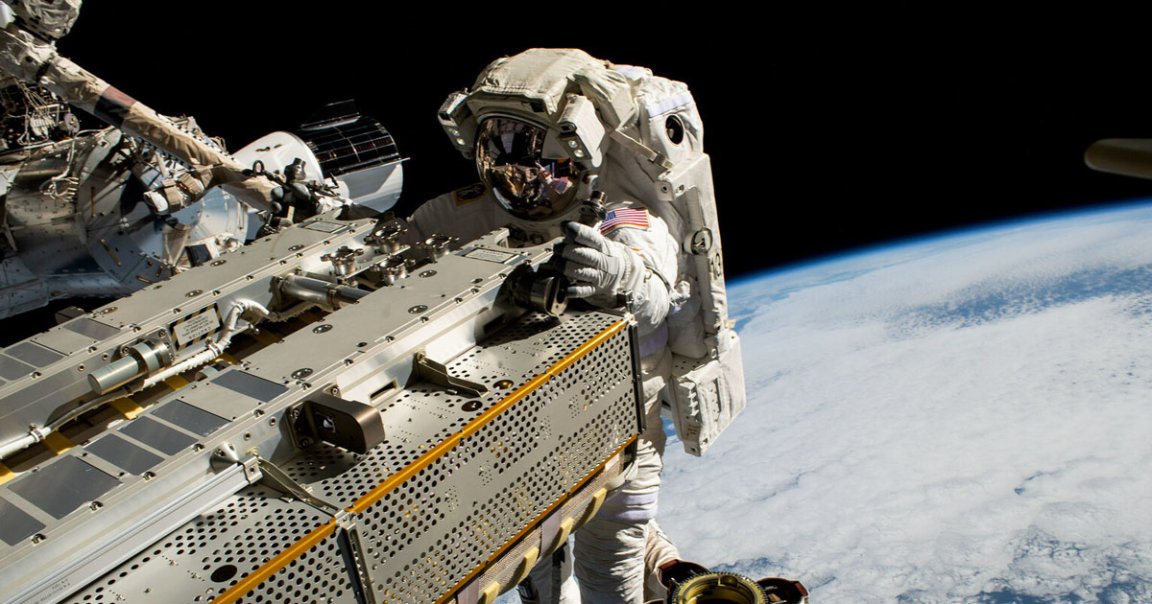
Space Swab
NASA astronauts Tracy Dyson and Matt Dominick are scheduled to venture outside the International Space Station on Thursday to see if samples of microorganisms that were attached to the exterior of the outpost have survived.
The outside of the space station is extremely hostile to life, with temperatures fluctuating between 248 and -148 degrees Fahrenheit. And that’s not to mention the extreme levels of solar radiation and the lack of an atmosphere.
Nonetheless, scientists have long been studying “extremophile” organisms that can withstand these conditions, including tardigrades, which are eight-legged micro-animals that have been shown to survive prolonged periods of time in outer space.
Smaller bacteria and microorganisms fare even better and can withstand those extreme conditions for years, as previous experiments outside of the ISS have shown, hinting at the tantalizing possibility of other parts of the solar system, such as Mars, being able to sustain life.
Freeze-Dried Bugs
Chances are that Dyson and Dominick will again encounter samples that are still teeming with life. Case in point, as detailed in a paper published in January, researchers discovered that certain species of spore-forming bacteria and fungi, which were deposited on cotton wool attached to metal rods outside of the ISS, survived after being exposed to outer space for two entire years.
“The main factors for the long-term survival could be the result of their dehydration and partial [freeze-drying] in the vacuum of near-Earth space,” the researchers suggested in their paper.
A 2020 paper by a team of Japanese researchers discovered that a bacteria called Deinococcus radiodurans lasted for a whopping three years in outer space.
In short, there’s ample evidence that microorganisms can withstand extreme temperature fluctuations, a lack of an atmosphere, and solar radiation.
Now, with the help of astronauts like Dyson and Dominick, we’re getting one step closer to understanding how they can do this and the possible implications this ability has on our search for extraterrestrial life.
More on microorganisms in space: NASA Swabbing Outside of Space Station to See If Stuff Is Growing On It